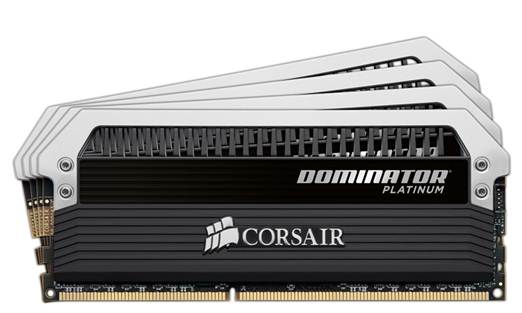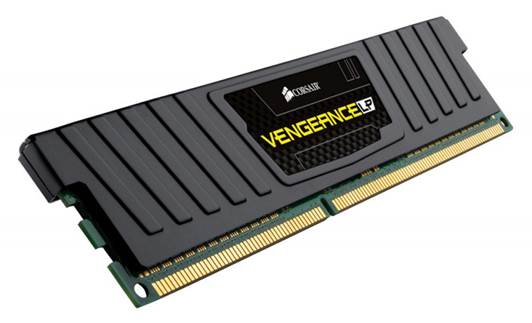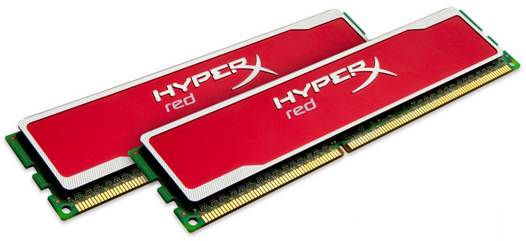Ram can have a big effect on how fast
your PC feels
From multitasking bet ween several applications
to rendering large video clips, ample amounts of fast memory can make your
computer swifter than a similar system with less RAM. Enthusiasts can take
advantage of the overclocking capabilities found in today’s high-end modules to
push frequencies higher and timings lower for even greater performance. Here,
we’ll cover the latest in the world of PC memory.
Intel Systems
If memory bandwidth is important to you,
Intel’s X79/Sandy Bridge-E platform is the clear performance king, because it
offers a quad-channel memory controller that can access four memory modules at
the same time. Our system testing found that a quad-channel DDR3-1600 setup
typically hit around 40GBps in SiSoftware Sandra’s 2012’s Memory Bandwidth
tests. Comparable triple-channel setups (using the X58 chipset) provided us
with around 30GBps, while dual-channel systems hit 20GBps. The quad-channel
memory architecture is only currently available on the X79 chipset. Most X79
motherboards offer either four or eight memory slots, and to take full
advantage of the speed these boards offer, you’ll want at least four identical
memory modules.

Intel’s
X79
Intel’s new Z77 chipset utilizes the
familiar dual-channel memory architecture, and the Ivy Bridge platform allows
for overclocking via a memory multiplier and base clock, a feature that was
more limited in Sandy Bridge processors.
AMD Systems
With AMD’s 9-Series platform, which
includes the 990FX, 990X, and 970 chipsets, AMD increased the native maximum
memory frequency to 1,866MHz, which is slightly faster than the DDR3-1600
native maximum frequency found on Intel’s X79 and Z77 chipsets. The 9-Series
chipsets all offer dual-channel memory support. AMD’s Llano APUs also added
support for DDR3-1866 and dual-channel memory, which is a big improvement over
the Brazos chipset’s single channel, DDR3-1333 speed.
1.5V
Both Intel and AMD recommend modules rated
at 1.5V for use on their newest chipsets. One of the key reasons to opt for
1.5V memory is the fact that the memory controller is now built into the
processor. According to Intel, it’s possible for higher memory voltages to
degrade the CPU. We’ve seen enough 1.65V modules to conclude that the higher
voltage seems to be okay, but you’re unlikely to find any memory modules above
1.65V. If you plan on overclocking the memory and need to raise the voltage, it
might be a good idea to invest in a 1.5V kit that will give you some voltage
headroom.
Heat Spreaders
Modern heat spreaders often offer an
aggressive look with tall fins that help to more effectively dissipate heat,
thanks to the larger surface area. Each memory vendor typically produces a
variety of heat spreader designs for its modules at any given time, and some
even offer different colors to match your system build. Tall heat spreaders can
sometimes be physically incompatible with large CPU heatsink/fan combos, so
make sure the memory you select will be able to fit underneath your system’s
CPU cooler.
Memory Profiles
When Intel announced the X79 chipset, it
also released version 1.3 of its XMP (Extreme Memory Profiles) that allows for
memory vendors to use profiles that are ideal for performance builds. Intel
also indicates that you can manually save SPD parameters in the BIOS to create
your own profile for custom overclocks. Intel XMP 1.3 profile support can be
found on many current Z77 motherboards, as well. AMD’s OverDrive tool lets you
optimize RAM speed and timings on an AMD motherboard via its Black Edition
Memory Profiles.
You’ll find that nearly all vendors in our
buyer’s guide bring something special with their modules. Whether it’s a unique
heat spreader, built-in profiles, low latency timings, or another innovation,
we’ll detail what makes DRAM special in our buyer’s guide. You’ll be able to
find the capacity, memory frequency, and reported timings at the bottom of each
listing. Prices with an asterisk (*) were the current online price at the time
of this writing.
Corsair Dominator Platinum 16GB
DDR3-2133 (CMD16GX3M4A2133C9)
Price: $309
Website: www.corsair.com
Why You’ll Dig It: Dominator Platinum
high-performance DDR3 memory is designed for world-class system builds. It’s
built with hand-screened integrated circuits, undergoes rigorous performance
testing, and incorporates state-of-the-art cooling for reliable performance in
demanding environments. Corsair designs the kit to operate at 1.5V with tight
timings 9-11-10-30. Corsair integrates an LED light bar at the top of the
module for some visual pop, and you can swap the light pipes within the bar to
match the lighting of your system’s color scheme. The Domi-nator Platinum
lineup is compatible with Corsair’s Airflow Pro memory cooler and works with
the Link Dashboard application to give you real-time temperature readings and
fan speed info.
Who Should Apply: Dominator Platinum is the
world’s most stunning memory, perfect for demanding hardware enthusiasts.
Capacity: 16GB (four 4GB modules)
Speed: 2,133MHz
Timings: 9-11-10-30

Corsair
Dominator Platinum 16GB DDR3-2133
Corsair Vengeance Low Profile 8GB
DDR3-1600 (CML8GX3M2A1600C9)
Price: $54.99
Website: www.corsair.com
Why You’ll Dig It: Vengeance Low Profile
heat spreaders have a reduced height of 1.03 inches (26.25mm). They’re designed
for high-performance systems with extra-large CPU coolers, small form factor
system builds, or any other space-constrained application where standard
Vengeance memory might not fit. All Vengeance modules are built with integrated
circuits that have been selected based on performance potential, which gives
you some headroom for overclocking. Corsair provides support for Intel’s XMP
settings, and this kit has a profile for 1,600MHz with timings of 9-9-9-24 at
1.5V. The Vengeance Low Profile modules are available with black, blue, or
white heat spreaders.
Who Should Apply: This memory is ideal for
system builders who require the ultimate in value and compatibility. The
Vengeance Low Profile modules provide excellent performance at an affordable
price.
Capacity: 8GB (two 4GB modules)
Speed: 1,600MHz
Timings: 9-9-9-24

Corsair
Vengeance Low Profile 8GB DDR3-1600
Kingston HyperX Red 8GB 1600MHz [Part
#KHX16C9B1RK2/8]
Price: $44
Website: www.kingston.com
Why You’ll Dig It: Nothing is quite a
menacing as an all-red system. And if you’re having trouble finding a memory
kit to match your big red build (or red and black system), look no further than
Kingston’s HyperX red modules. This kit delivers a speed of 1,600MHz with
timings of 9-9-9 at 1.65V via its Intel XMP profile. Like the rest of
Kingston’s HyperX lineup, the HyperX red memory is covered with a lifetime
warranty and free tech support. The HyperX red heat spreader is only slightly
larger than the module, so you won’t have to worry about clearance issues with
large CPU coolers.
Who Should Apply: Builders looking for
memory to compliment the red components inside their system. Its low latency is
good for performance enthusiasts.
Capacity: 8GB (two 4GB modules)
Speed: 1,600MHz
Timings: 9-9-9

Kingston
HyperX Red 8GB 1600MHz